Home / News & Blog / Abrasive Blog / Different Types of Abrasive (Sand) Blasting
Abrasive blasting, also known as sandblasting, is a widely used technique to clean, smooth, or shape a variety of surfaces by propelling abrasive particles at high velocity. This method is commonly employed in industries ranging from automotive and construction to aerospace and manufacturing. Depending on the material being worked on and the desired outcome, different types of abrasive blasting are used. In this guide, we’ll walk through the various types of abrasive blasting methods, their specific uses, and the benefits and limitations of each.
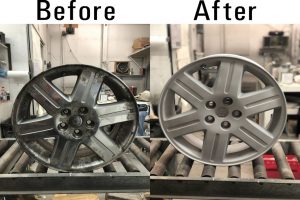
Traditional sandblasting is one of the oldest forms of abrasive blasting, utilizing sand as the primary abrasive material. Though modern sandblasting often replaces sand with other media like aluminum oxide, garnet, or glass beads, the core process remains the same: using high-velocity particles to clean, smooth, or etch surfaces.
Common Applications:
Rust Removal: Sandblasting is often the go-to solution for stripping rust from metal surfaces, making it a favorite in automotive restoration and industrial applications.
Surface Preparation: Preparing surfaces for painting or coating is one of the most common uses, ensuring the substrate is clean and rough enough for good adhesion.
Etching and Texturing: For decorative finishes, sandblasting is used to etch patterns onto glass, wood, or stone, as well as create textured effects on concrete surfaces.
Key Advantages:
Highly effective for aggressive cleaning and surface prep, especially for metal surfaces.
Can be used on large-scale industrial projects due to the versatility and speed of the process.
Challenges:
The use of traditional sand, often rich in silica, poses a health risk due to inhalation of fine dust particles, leading to serious conditions like silicosis.
High dust levels can make it difficult to work in enclosed spaces without proper ventilation or personal protective equipment.
Aluminum oxide blasting uses sharp, durable aluminum oxide particles for surface preparation. This method is known for its aggressive action and is commonly used in industries where deep cleaning or profiling is required.
Common Applications:
Paint and Coating Removal: Aluminum oxide is effective at stripping layers of paint and coatings from metal, concrete, and stone surfaces.
Etching: Used for etching designs into glass, ceramics, and metals, providing a rough surface profile.
Surface Profiling for Coatings: Often used to prepare surfaces for painting or coating by creating an ideal surface texture.
Key Advantages:
High durability and reusable, which helps reduce long-term abrasive costs.
Provides a strong abrasive force, perfect for heavy-duty surface preparation.
Challenges:
Can cause significant damage to softer materials or surfaces.
Generates a lot of dust, requiring proper ventilation and safety precautions.
Glass bead blasting uses small, smooth glass beads as the abrasive medium. Unlike traditional sand, glass beads create a finer, smoother finish without significantly damaging the surface. This technique is perfect for applications where a polished or satin finish is required without aggressive surface removal.
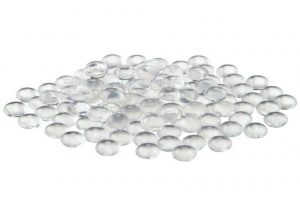
Common Applications:
Surface Polishing: Glass bead blasting is ideal for creating a smooth, shiny finish on metals, especially for stainless steel, aluminum, and other delicate alloys.
Rust and Paint Removal: It’s also effective for removing rust, paint, and contaminants from surfaces while maintaining the integrity of the material beneath.
Cleaning Precision Parts: Used extensively in cleaning delicate parts without causing dimensional changes or surface damage.
Key Advantages:
Produces a uniform, smooth surface finish, often used in high-end aesthetic applications.
Non-destructive to softer materials, making it ideal for sensitive parts.
Challenges:
Glass beads can be more expensive than other abrasive options like sand or garnet.
Less effective for heavy-duty or deeply embedded contaminants.
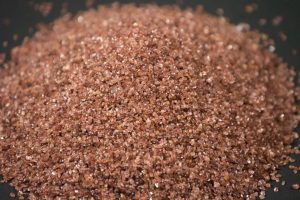
Garnet blasting uses crushed garnet as the abrasive medium, offering a balance between aggressive cutting power and minimal dust generation. Garnet is a natural, hard, and durable material that performs well across a wide variety of blasting applications.
Common Applications:
Heavy Duty Cleaning: Effective for cleaning industrial metal surfaces, especially in construction, shipbuilding, and automotive industries.
Stripping Coatings: Removes coatings from metal, concrete, and other industrial surfaces.
Surface Preparation: Ideal for preparing surfaces for coatings and bonding applications.
Key Advantages:
High cutting power, making it suitable for tough applications like heavy rust removal.
Low dust generation, improving visibility and safety during operation.
Challenges:
Not suitable for cleaning delicate or soft materials due to its abrasive nature.
Steel shot can cause some surface damage if not properly controlled.
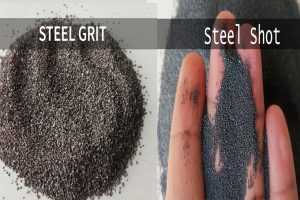
Steel shot blasting uses small steel balls to clean, polish, or finish surfaces. It’s most commonly used for heavy-duty applications, particularly in industries that deal with large steel or iron components. This method is often utilized in shot peening, a process used to improve the strength and fatigue resistance of metals.
Common Applications:
Shot Peening: Steel shot is used to impart a compressive stress layer to metal parts, enhancing fatigue resistance. This is crucial for industries such as aerospace and automotive manufacturing.
Cleaning Metal Components: Ideal for cleaning steel, cast iron, and large machinery parts by removing rust, scale, and other contaminants.
Surface Profiling: Steel shot can be used for preparing surfaces for coating or for texturing metal parts.
Key Advantages:
Highly durable and reusable, making it cost-effective for large-scale industrial use.
Excellent for heavy-duty cleaning and polishing tasks, especially in metalworking.
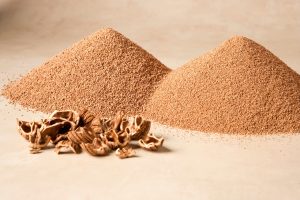
Walnut shell blasting uses crushed walnut shells as the abrasive material, providing a gentler approach to abrasive blasting. This method is perfect for cleaning delicate parts without causing surface damage.
Common Applications:
Cleaning and Polishing: Used to clean delicate parts such as automotive components, turbine blades, and even jewelry.
Surface Cleaning for Softer Materials: Walnut shells are ideal for cleaning materials like wood, marble, and stone, where a gentle touch is needed.
Paint Stripping: Effective for removing paint from delicate machinery or vehicle parts.
Key Advantages:
Gentle on surfaces, reducing the risk of damage to sensitive materials.
Environmentally friendly and non-toxic, making it a safe option for various industries.
Challenges:
Not suitable for heavy-duty cleaning tasks or thick coatings.
Lower abrasive power compared to other blasting media like garnet or aluminum oxide.
Plastic media blasting uses plastic particles, such as acrylic, polyester, or polyurethane, to clean and finish delicate materials. This non-abrasive method is often used in situations where traditional abrasive media might cause damage.
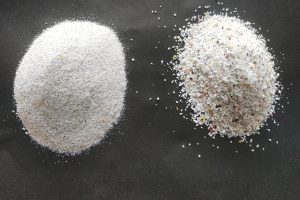
Common Applications:
Cleaning Precision Parts: Ideal for cleaning delicate electronic components or parts that cannot tolerate rough abrasives.
Stripping Paint from Soft Materials: Effective for removing paint from plastic parts or thin metal without distorting the substrate.
Surface Preparation for Soft Metals: Used for preparing soft metals, such as aluminum, for coating or bonding applications.
Key Advantages:
Gentle on delicate parts, reducing the risk of distortion or damage.
Produces minimal dust, ensuring cleaner work environments.
Challenges:
Less effective for heavy-duty cleaning or aggressive rust removal.
Can be more expensive than other abrasives.
Each type of abrasive blasting offers distinct advantages depending on the application and material being worked on. Whether you’re removing rust, preparing a surface for painting, or cleaning delicate components, understanding the differences between these techniques will help you choose the right one for your needs.
To get the best results, always consider factors such as the surface material, required cleaning intensity, and any specific safety or environmental concerns. Choosing the right abrasive blasting method can make a huge difference in terms of efficiency, cost-effectiveness, and the final quality of the finished surface.